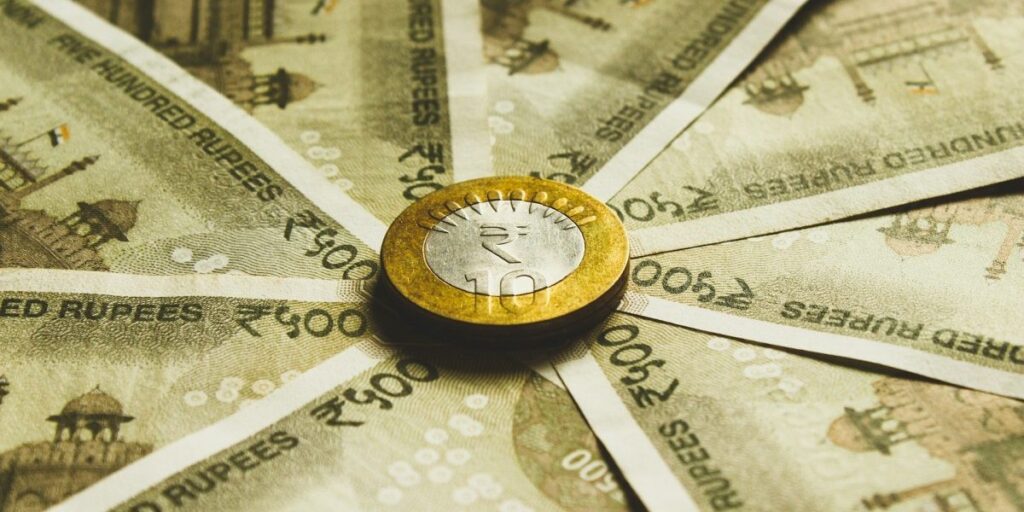Household Savings in India Drop to a 5-Decade Low in FY23
Newsclick Report
In a concerning development, the net financial savings of households in India fell to a nearly five-decade low of 5.1% of GDP in the fiscal year 2022-2023 (FY23), according to a report by the Financial Express (FE). This significant decline is down from 7.2% in the previous fiscal year, FY22, and is based on data from the Reserve Bank of India (RBI).
The data also revealed a concerning trend in the annual financial liabilities of households, which increased sharply by 5.8% of GDP in FY23, compared to 3.8% in FY22. This indicates that households have increasingly resorted to borrowing to meet their consumption needs and purchase real estate, the report said.
The rate of increase in financial liabilities during FY23 was the second-highest since Independence, with only FY07 recording a sharper increase at 6.7%.
In absolute terms, net household assets saw a significant decline from Rs 22.8 trillion in FY21 to Rs 16.96 trillion in FY22, and further dropped to Rs 13.76 trillion in FY23, as per RBI data.
Household debt, measured in terms of the stock of financial liabilities, remained notably high at 37.6% of GDP in FY23, compared to 36.9% in FY22.
The FE report highlights that falling or stagnant household incomes, combined with high inflation, are likely the primary reasons for the subdued savings and increased borrowing among households. As per the report, key factors contributing to this challenging financial landscape include:
1. Lack of Real Wage Growth: Over the past eight years, there has been no significant growth in real wages at the all-India level. This stagnation in wages is a concerning factor given the current high inflation rates.
2. Rising Healthcare and Education Costs: The cost of healthcare and education in India has been steadily increasing, with medical inflation reaching 12% in 2021, the highest among Asian countries. Additionally, the cost of medical treatment has doubled in just five years. Education inflation rates have also been notably high, ranging from 11% to 12%.
3. Impact on Consumption and Investments: The data raises concerns about the immediate growth potential of the Indian economy. While private consumption has shown some improvement in recent quarters, it may not provide the anticipated support to economic growth, given the subdued savings and rising liabilities among households. Moreover, the delay in the private capital expenditure (capex) cycle further complicates the growth outlook.
Economists, including Nikhil Gupta from Motilal Oswal, told FE about concerns over the sustainability of the current consumption growth, given weak income growth and the substantial decline in financial savings primarily driven by increased borrowings. Whether this decline in consumption will be offset by increased investments remains uncertain.
While the trend in household savings could potentially reverse if the economy picks up pace and real incomes begin to grow, it is essential to monitor both consumption and investment trends, as a failure to see meaningful growth in savings may impact overall economic performance.
Recent data for the first quarter of FY24 showed some improvement in private consumption final expenditure (PFCE), likely aided by lower inflation, the FE report said. However, consumption and investment trends remain mixed, with various sectors showing varying performance levels.
Low Small Vehicle Sales, Rush for Gold Loans Point to Economic Distress
The Wire Staff
A number of recent revelations point to continuing distress in the Indian economy, particularly for those in rural areas and belonging to lower income groups.
Livemint has reported that the small car segment saw a record decrease in its share of passenger vehicle sales during the second quarter of this financial year. Higher end cars, like SUVs and MUVs, however, saw a relative increase in demand, and amounted to 60% of all vehicle sales in September.
“This trend also points to an uneven income recovery at the bottom of the pyramid in the aftermath of the Covid-19 pandemic,” the newspaper said. What is noteworthy is that small cars in the second quarter of FY24 were 75% lower than the pre-pandemic peak of 2018-19.
The sale of entry-level motorcycles too dropped to its lowest point at 1.4 million units. This is 39% less than the peak in Q2 of 2018-19.
In another marker of continuing distress, particularly in rural and semiurban areas, gold loan companies are facing a surge in demand ahead of the festive season, Economic Times reported. A gold loan is a cash loan provided with gold being the collateral.
While one explanation could be that people are wanting to spend more this festive season as the COVID-19 pandemic has eased, the rush for loans suggests their incomes are not able to provide enough liquidity. “The erratic monsoon in some parts of the country may have also dented rural incomes, forcing people to borrow against their gold,” the newspaper stated.
(Courtesy: The Wire.)
India’s Poverty Soared Pre-Pandemic, Eased in 2021 but Remained Above 2018 Levels
The Wire Staff
According to the latest World Bank data, extreme poverty in India declined in 2021 – after a surge in 2019 and 2020 – but remained above the 2018 level.
While the pandemic resulted in an increase in poverty for most countries around the world, poverty in India was already showing an upward trend in 2019.
In 2018, 151.79 million Indians were categorised under this head which shot up to 176.09 million in 2019 – an increase of nearly 24 million. India’s poverty rate at 11.9% in 2021 also remained higher than the 2018 level of 11.09%, though easing from 14.72% in 2020, Businessline reported.
According to World Bank measures, the extreme poverty rate is set at $2.15 a day (approximately Rs 180) in purchasing power parity terms.
The global lender used data from the Consumer Pyramids Household Survey, conducted by the Centre for Monitoring Indian Economy, to estimate poverty for India in the absence of Household Consumer Expenditure Survey (CES) data from the government since 2011-12, Businessline reported.
The results for 2022-23 and 2023-24 CES are likely to come only after the 2024 general elections, The Wire had reported. The findings of a similar exercise done by the government in 2017-2018 were withheld but the leaked data had shown a rise in poverty levels and a 45-year high in unemployment in 2018.
Former member of the erstwhile Planning Commission N.C. Saxena said there were many reasons why poverty might have increased before the pandemic in 2018-19. “The government’s own 2017-18 consumption survey that it junked had shown that poverty increased in India. In the 2005-2015 period, there was a great deal of investment in construction, which declined after 2015. So, a large number of people who were involved in construction activity lost their jobs. The latest figures also show there has been no increase in real wages. The number of people who are in the workforce has also not increased significantly. Therefore, a large number of people are in the third category of ‘neither employed nor seeking employment’,” he told Businessline.
The World Bank also made a significant upward revision to its previous estimate of the number of people living in extreme poverty in 2019. The new estimate is 176.09 million, whereas the earlier estimate was 136.81 million.
This narrowed the gap with the 2020 figures to 29.5 million, implying that the pandemic had a smaller debilitating impact on poverty than previously thought.
Last year, the World Bank had said about 56 million Indians may have plunged into extreme poverty in 2020 as a result of the pandemic, increasing the global tally by 71 million and making it the worst year for poverty reduction since World War II, Businessline reported.
(Courtesy: The Wire.)




